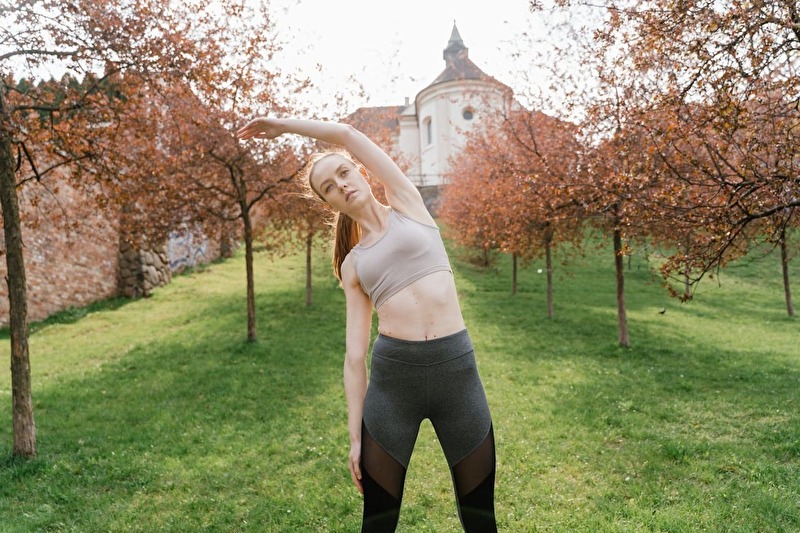When was the last time you shrugged your shoulders, rolled them back, and took a deep breath? It may have felt like just a brief moment of relief for muscle tightness—but what if it did more? What if that simple movement also nudged your blood pressure downward and your nervous system into “rest and recover” mode?
If you train hard, sit long hours, or aim to keep your body sharp beyond the gym, this movement matters. Let’s dive into what research says, how it works, and how you can easily slip it into your routine.
What the Research Says

Recent studies are shining a light on something many of us already instinctively feel: the calm that comes after a shoulder roll or upper‐back stretch. An open-access trial found that healthy adults who performed upper-back and shoulder self-stretching experienced significant decreases in systolic and mean blood pressure.
In another randomized trial, individuals with “high‐normal” blood pressure or stage 1 hypertension did either 30 minutes of daily stretching or brisk walking, five days per week for eight weeks. The stretching group showed greater reductions in sitting systolic and diastolic blood pressure than the walking group.
These findings don’t claim stretching replaces cardio or strength training—but they do add a smart, accessible tool to the toolkit of anyone committed to performance and health.
How It Might Work (Mechanisms)

Why would rolling your shoulders or stretching your upper back influence blood pressure? Here are the key mechanisms at play:
Parasympathetic activation: Stretching slow, controlled movements paired with deep breathing can shift your nervous system out of the “fight or flight” (sympathetic) mode and toward “rest and digest” (parasympathetic). With lower sympathetic activity, blood pressure tends to be lower.
Improved vascular flexibility: Muscles and the blood vessels running through them get stretched too. Less vascular stiffness means less resistance to flow, which means fewer barriers to circulation and lower pressure on the arterial walls.
Posture and circulation: Many of us carry postural strain in the shoulders and upper back—hunched, forward head, tight traps—which can indirectly impair circulation and nervous system balance. Addressing that tension supports larger systems.
What Movements to Do & How to Do Them
Here are clear, simple movements you can start today:
- Shoulder Rolls
-
- Stand or sit upright with feet flat, back neutral.
- Inhale, lift your shoulders toward your ears.
- Exhale, roll them back and down until your shoulder blades draw gently toward each other.
- Repeat slowly for 8–10 rolls, then rest.
2. Upper-Back “Open” Stretch
-
- Stand or sit upright. Interlock your fingers behind your head or neck, elbows wide.
- Gently lean your upper back backward (not into full extension), opening your chest and stretching the upper back region.
- Hold for 10–20 seconds while breathing deeply (diaphragmatic/belly breathing).
- Release slowly and repeat 2–3×.
3. Controlled Breathing Focus
-
- Throughout the movements, focus on slow inhalation through the nose, letting your belly expand, and slow exhalation through the mouth or nose.
- This breathing assists the parasympathetic response.
Frequency Suggestions
- Do this once after your training session (strength, spin, etc.) as part of your cooldown.
- Or incorporate it during your day—e.g., after long sitting, at your desk every hour.
- Even a 2-3 minute break can help.
- Safe for most, but if you have recent neck/back injuries, dizziness, known hypertension or are on meds—check with a professional.
Why This Matters for Your Training & Health

For anyone who trains, sits, operates under stress, or simply wants longevity in their body—this habit matters.
- It supports recovery: Relief of upper‐body tension translates to better movement, better posture, less compensatory strain in training.
- It supports circulation and vascular health: Stronger, more flexible arteries and veins mean your body handles stress, load and rest better.
- It supports nervous system health: Training isn’t just about going hard—how you recover determines whether you adapt or stagnate.
- It’s accessible and low‐investment: You don’t need fancy equipment or a large block of time. It fits into transitions—post workout, post work, post commute.
That said—this is not a replacement for your aerobic conditioning, strength training, nutrition, sleep or medical management. It’s a strategic addition that aligns with “train smart, recover smarter.”
FAQs & Myths
Q: Can I just stretch and skip cardio for lowering blood pressure?
A: No. Stretching may help modestly, but aerobic and strength training deliver broader cardiovascular, metabolic and functional benefits. Think of the stretch as a complement.
Q: How quickly will I see effects on my blood pressure?
A: Some immediate responses (e.g., blood pressure drop during a stretch) have been observed, but sustained change requires consistent practice combined with broader healthy habits.
Q: Is it safe for me if I already have high blood pressure or training injuries?
A: Generally yes—with caution. Maintain your prescribed treatments and consult a health professional. Modify the stretch if you have neck, shoulder or spine issues.
Q: Does it really matter which stretch I do?
A: Research is strongest for upper back/shoulder stretches, but any regular stretching of major muscle groups may benefit vascular health. The consistency is more important than the exact move.
Q: Will this “cure” hypertension?
A: No. Hypertension is multi‐factorial. Stretching supports the system, but does not replace medical oversight or other lifestyle factors (diet, sleep, activity).
How to Integrate It Into Your Daily Routine

- Desk/Office Routine: Every hour, stand up, roll your shoulders 8–10 times, perform one upper‐back stretch for 10–20 seconds with deep breathing—repeat 2×.
- Post Training Cooldown: After your 60-minute class or gym session, allocate 1-2 minutes specifically for those shoulder/back stretches and breathing focus.
- Evening Routine: At the end of the day, before you unwind, do a short sequence of these stretches. Let your body, nervous system and circulation reset.
- Track it: Set a reminder, log it in your training app or journal. Small habits build into big gains when done consistently.
- Pair with Your Training Philosophy: At SPENGA Ballston we believe performance isn’t just about the sprint, it’s about the recovery. This stretch habit aligns with our commitment to disciplined, smart training and longevity.
Conclusion
Rolling your shoulders and stretching your upper back may seem like a small thing—but as research shows, it could be more than just good for your posture. It may contribute to lower blood pressure, healthier blood vessels and a calmer nervous system.
Start today. Take 2 minutes. Roll your shoulders. Stretch your upper back. Breathe. Be intentional.
Performance isn’t built only in peak effort — it’s built in smart recovery, in bodily awareness, in habits that support the long game. Make this small shift, and let it become part of your training presence, your recovery habit, your performance advantage.

